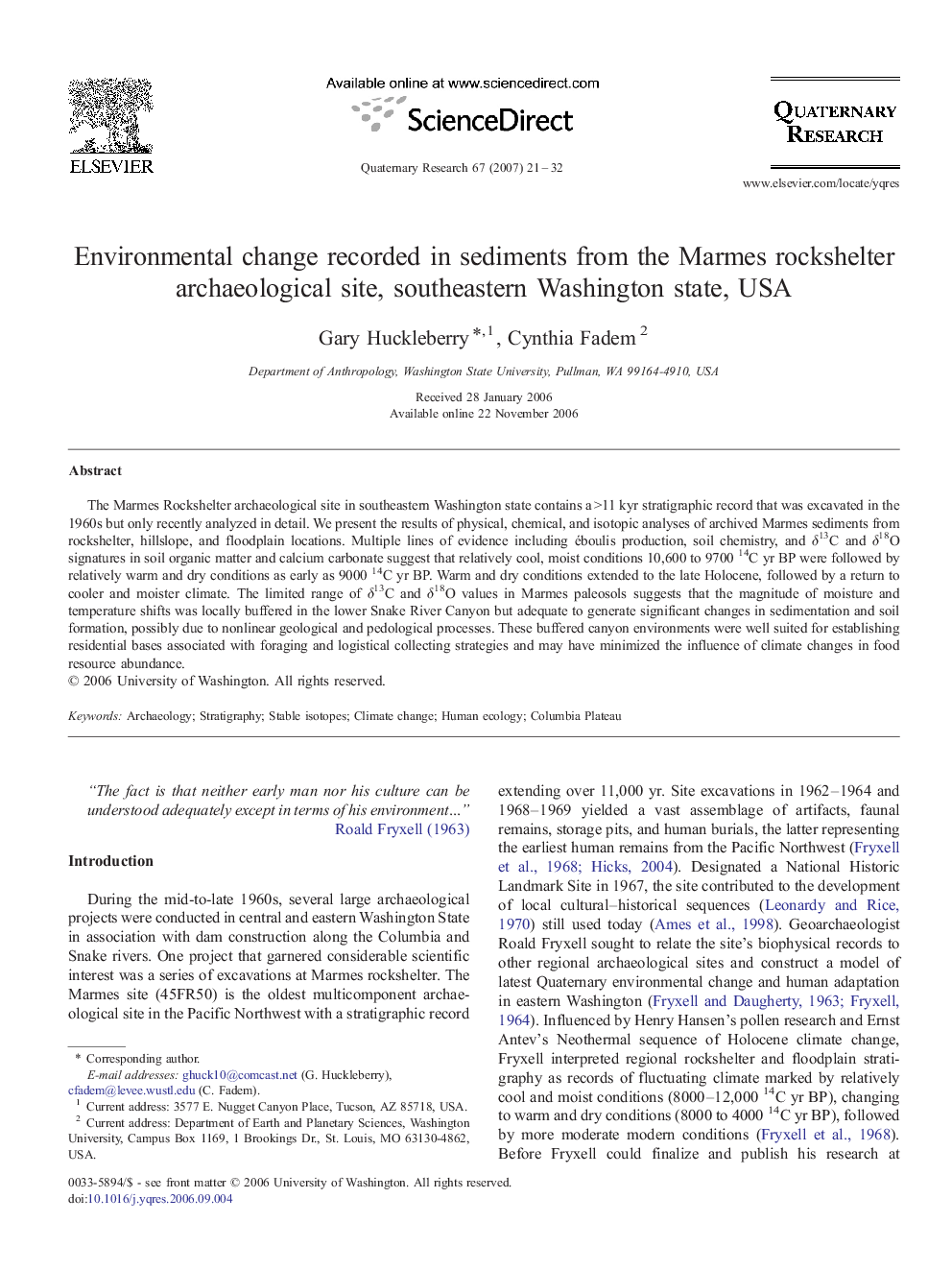| Article ID | Journal | Published Year | Pages | File Type |
|---|---|---|---|---|
| 1045627 | Quaternary Research | 2007 | 12 Pages |
The Marmes Rockshelter archaeological site in southeastern Washington state contains a > 11 kyr stratigraphic record that was excavated in the 1960s but only recently analyzed in detail. We present the results of physical, chemical, and isotopic analyses of archived Marmes sediments from rockshelter, hillslope, and floodplain locations. Multiple lines of evidence including éboulis production, soil chemistry, and δ13C and δ18O signatures in soil organic matter and calcium carbonate suggest that relatively cool, moist conditions 10,600 to 9700 14C yr BP were followed by relatively warm and dry conditions as early as 9000 14C yr BP. Warm and dry conditions extended to the late Holocene, followed by a return to cooler and moister climate. The limited range of δ13C and δ18O values in Marmes paleosols suggests that the magnitude of moisture and temperature shifts was locally buffered in the lower Snake River Canyon but adequate to generate significant changes in sedimentation and soil formation, possibly due to nonlinear geological and pedological processes. These buffered canyon environments were well suited for establishing residential bases associated with foraging and logistical collecting strategies and may have minimized the influence of climate changes in food resource abundance.
